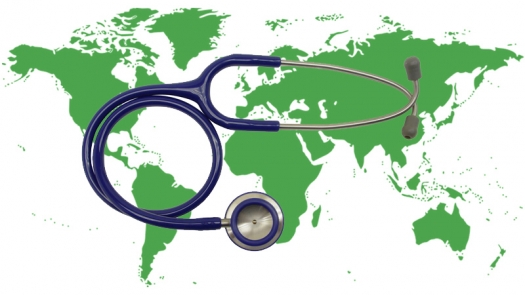MedicalTourism.jpg

Collage by FAIM / Map is public domain; Stethoscope from freeimages.com
The Affordable Care Act has spurred much interest in what we pay for common medical procedures in both the US and internationally. Since a provision of the new act will require US hospitals to inform patients of specific charges for a given procedure, enterprising journalists have set out to discover how big these differences really are. Their findings are startling.
A recent article in the New York Times focused on colonoscopy costs in the New York Metro area and found that patients were charged fees ranging from a low of $745 to a high of $8,500. Not surprisingly, variances like this are common across the nation. One might expect regional differences between a large East or West Coast city versus one in the heartland, and while there was some validity to this, the price ranges are still considerable. An article in Money Morning noted that the cost of a common joint replacement surgery varied from $5,300 in Ada, Oklahoma, to $223,000 in Monterey Park, California. No two patients are the same, of course. One would expect a higher price tag for a difficult case riddled with complications, but still the large difference raises many questions.
Some insurers have taken note of this and have actually paid for patients to travel to other hospitals, even internationally, for their procedures. Sometimes they have also covered travel expenses for a companion caregiver. So far, this seems to occur more often with large companies that are self-insured. Nevertheless, the considerable cost savings has made insurers pay attention. It seems likely that when faced with cost limitations, more insurers will consider sending people to other facilities in the US and overseas.
Costs can vary even more in the international market. One medical tourism website noted, for example, that heart bypass surgery averaged a high of $170,000 in the U.S. to a low of $3,000 in India. While someone might feel a little uncomfortable traveling abroad for a complex operation like heart surgery, other procedures might look extremely attractive. Consider the differences between elective and out of pocket items like dental implants ($5,000 U.S. vs $1,100 in other countries listed), breast implants, plastic surgery and bariatric procedures that insurance may not cover. Also, many innovative treatments like stem cell therapies, CAM, state-of-the-art cancer therapy or novel non-FDA approved drug treatments are often other reasons that one might seek treatment outside of the U.S.
There are definite bargains to be found in the international market, especially if paying out of pocket. Nevertheless, it pays to be cautious. There are a number of reasons medical procedures completed overseas cost less. A major one is the lack of liability laws. Know that if a problem arises from your procedure you may have little legal recourse.
If you are considering going abroad for your procedure, do your homework first. Learn about your procedure: are there different ways of handling it, some with higher success rates? If you are having an implant or joint replacement surgery, what kinds of materials are used? If your hip joint replacement undergoes a recall, how does that impact you?
Talk to a physician about your procedure, not the receptionist on the phone or a sales agent. Research the hospitals and locations. Some have stellar reputations and some do not. Since medical tourism has become a multi-billion dollar industry a lot of new facilities are entering the marketplace and some have more experience and better reputations than others. Try to discern between marketing hype and an accurate understanding of a facility's capabilities and success rates.
There are a number of issues to consider when making a decision to travel for health.
- Does your host international location provide a safe environment or is it a place of political strife?
- Is your immune system strong enough to combat possible exposure to foreign pathogens?
- What kind of aftercare is available?
- Will you need to extend your trip for rehabilitation or physical therapy?
- Does the staff have people who speak your primary language?
- What happens if you have side effects?
- Will your insurance pay any or part of the cost?
- Does your procedure assume that you will need a caretaker to navigate the post-surgical period?
- How soon will you be able to travel?
- What happens if things go wrong?
Despite the many questions, traveling for medical care can make a lot of sense. In researching this article I found a plethora of web sites and information on the internet. There are many to choose from: some promote particular procedures or locations. Some seem more focused on marketing. A good place to start is the Medical Tourism Association which has a lot of great general information and has done some certification of doctors and facilities.
Will traveling internationally for health care eventually become as popular as international call centers for customer service? It's hard to say, especially given the climate of uncertainty in the current health care market. In the meantime, the bargains are out there. Bon Voyage and To Your Health!


